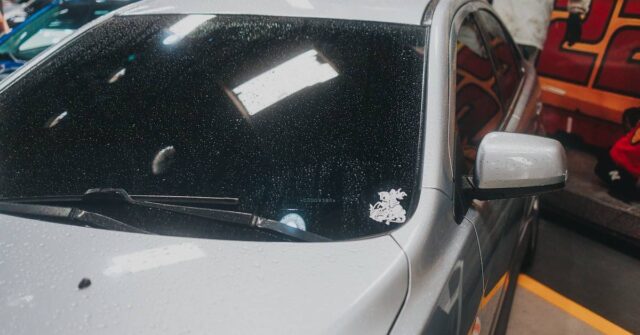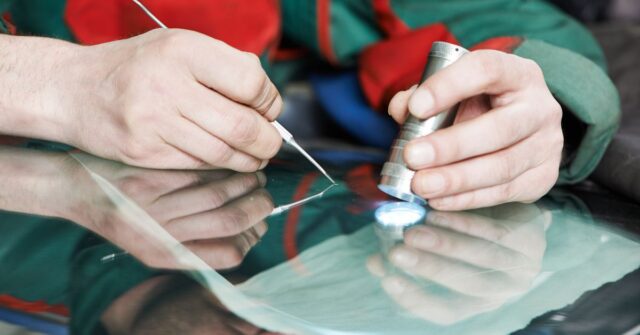When considering vehicle technologies, we often overlook the humble windscreen. Yet, it has undergone dramatic changes in the last few decades.
In this article, we will explore the history, current state, and future of windscreen technologies, with a particular focus on the Australian market.
A Brief History of Windscreen Technologies in Australia
Windscreens have come a long way since their early days. In Australia, the journey has been both fascinating and groundbreaking, marked by significant improvements in safety and functionality.
The Early Days: Safety Glass and Laminated Windscreens
Early motor vehicles in Australia used ordinary glass for windscreens, which posed significant safety risks.
The introduction of safety glass, which comprised a layer of plastic sandwiched between two layers of glass, was a game-changer.
This laminated windscreen was less likely to shatter upon impact, reducing the risk of injury.
The Advent of Tempered Glass
The mid-20th century saw the advent of tempered glass.
By heating and then rapidly cooling the glass, manufacturers were able to create windscreens that were stronger and more heat-resistant than traditional laminated glass.
When broken, tempered glass shatters into small, dull pieces, further enhancing safety.
Modern Innovations: From Heated Screens to Heads-Up Display
In recent years, we have seen a wave of modern innovations.
Heated windscreens, which use a network of thin wires or a transparent conductive layer to melt ice and fog, have provided improved visibility in poor weather conditions.
Convenient features like automatic wipers and Advanced Driver Assistance Systems (ADAS) including auto braking, lane departure warnings and other safety features.
In addition, Heads-Up Displays (HUDs) have been introduced, projecting useful information onto the windscreen and allowing drivers to keep their eyes on the road.
Understanding Windscreen Technologies
Before diving into the latest innovations, let’s take a moment to understand the basic technologies that underpin windscreens.
What Makes a Windscreen?
A windscreen is more than just a piece of glass. It’s a complex structure that includes a glass layer, a plastic interlayer, and often embedded technologies.
The interlayer is what gives the windscreen its strength and safety features, while the embedded technologies can include things like rain sensors and HUDs.
Types of Windscreen Glass
There are two main types of windscreen glass: laminated and tempered.
As mentioned earlier, laminated glass is made up of two layers of glass with a plastic interlayer, while tempered glass is heat-treated for increased strength.
While tempered glass was once popular for its safety features, laminated glass has become the standard due to its superior durability and ability to embed technologies.
Current Technologies in Use
Current windscreen technologies include heated windscreens, HUDs, and rain-sensing wipers. These technologies are becoming increasingly common, particularly in luxury vehicles.
Latest Innovations in Windscreen Technologies
Now, let’s turn our attention to the latest windscreen technologies that are transforming the automotive industry.
Smart Windscreens
Smart windscreens are the next evolution of HUD technology. They can display more complex information, including navigation, traffic updates, and even social media notifications.
This technology is still in its early stages, but it’s set to become a standard feature in the near future.
Solar-Control Glass
Solar-control glass is designed to reflect or absorb heat, helping to regulate the temperature inside the vehicle.
This not only improves comfort but also reduces the load on the vehicle’s air conditioning system, improving fuel efficiency.
Augmented Reality (AR) Windscreens
Augmented reality windscreens are an exciting development that could revolutionise the driving experience.
These windscreens could overlay digital information onto the real world, such as highlighting the edge of the road in poor visibility conditions or displaying safety warnings directly in the driver’s line of sight.
Self-Healing Windscreens
Self-healing windscreens are an innovation that could significantly extend the lifespan of a windscreen.
These windscreens have a special coating that can repair small cracks and chips, preventing them from spreading and causing further damage.
Impacts of Innovations on Safety and Efficiency
The latest windscreen technologies are not just about adding new features. They also have the potential to dramatically improve safety and efficiency.
Enhanced Visibility for Safety
Technologies like heated windscreens, HUDs, and AR windscreens can significantly enhance visibility.
This can help to prevent accidents and improve driver reaction times, making the roads safer for everyone.
Energy Efficiency and Environmental Impact
Windscreens can also play a role in energy efficiency. Solar-control glass, for example, can reduce the load on the vehicle’s air conditioning system, leading to lower fuel consumption and emissions.
Similarly, electric vehicles (EVs) can benefit from heated windscreens that use less energy than traditional defrosting methods.
Contributions to Autonomous Driving
Many of the latest windscreen technologies are also playing a crucial role in the development of autonomous vehicles.
Smart windscreens and AR windscreens, in particular, could provide the interface between the vehicle and the driver, displaying crucial information about the vehicle’s operation and surroundings.
The Role of Australian Companies in Windscreen Technology Innovations
Australian companies have played a significant role in the development and adoption of new windscreen technologies.
Leading Australian Companies in the Sector
Companies such as XYZ Windscreen Technologies and ABC Automotive Innovations are leading the way in Australia.
These companies are not only adopting the latest technologies but also contributing to their development through research and innovation.
Local Innovations Making a Global Impact
Australian innovations are also making a global impact. For example, a new AR windscreen technology developed by an Australian startup is now being used by major automotive manufacturers worldwide.
Partnerships and Collaborations
Collaborations between Australian companies and international partners have also been crucial.
These partnerships have facilitated the sharing of technology and expertise, leading to faster innovation and adoption.
Legal and Regulatory Considerations
As with any new technology, there are legal and regulatory considerations to take into account.
Australian Standards for Windscreens
Australia has strict standards for windscreens to ensure safety. These standards cover everything from the type of glass that can be used to the visibility requirements.
Any new windscreen technology must meet these standards before it can be sold in Australia.
Regulation of New Technologies
New technologies also face regulatory scrutiny. For example, AR windscreens must not only meet visibility requirements but also ensure that the displayed information does not distract the driver.
The Australian government is actively working with industry stakeholders to develop regulations for these new technologies.
Future of Windscreen Technologies in Australia
Looking ahead, the future of windscreen technologies in Australia is bright, with several promising developments on the horizon.
Emerging Technologies on the Horizon
Emerging technologies include more advanced smart windscreens, improved solar-control glass, and even transparent display screens that could replace traditional in-car displays.
These technologies could make driving safer, more comfortable, and more efficient.
Potential Challenges and Solutions
Despite the exciting potential, there are challenges to overcome. These include technological hurdles, regulatory challenges, and consumer acceptance.
However, with ongoing research and development, these challenges can be overcome.
Preparing for the Future: Opportunities for Australia
With its strong automotive industry and innovative spirit, Australia is well-positioned to seize the opportunities presented by these new windscreen technologies.
By continuing to invest in research and development, Australian companies can lead the way in this exciting field.
Conclusion
From the early days of safety glass to the latest smart windscreens, the evolution of windscreen technologies has been a journey of continuous innovation.
As we look ahead, it’s clear that this journey is far from over. With new technologies on the horizon and a strong spirit of innovation, the future of windscreen technologies in Australia looks brighter than ever.





